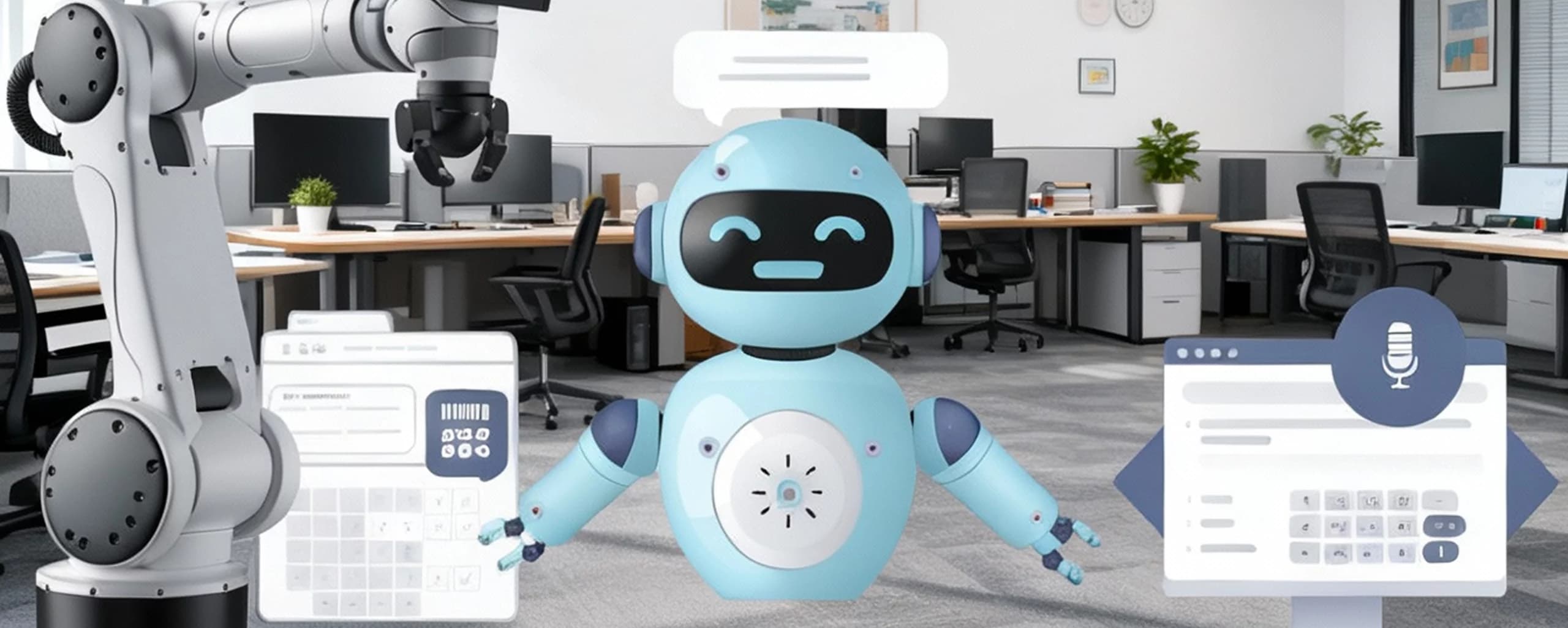AI Automation Tools: Driving the Next Wave of Business Efficiency

AI automation tools are changing how businesses operate. From streamlining workflows to improving decision-making, these tools are helping companies reduce costs and increase productivity. According to McKinsey, automation could raise global productivity growth by up to 1.4% annually. Whether you’re in marketing, operations, or finance, integrating AI automation tools can reshape how your teams perform.
What Are AI Automation Tools?
AI automation tools use machine learning and data-driven algorithms to handle repetitive, rule-based tasks. They can interpret data, execute decisions, and adapt over time. These tools are built to simplify processes that traditionally require manual intervention, such as scheduling, email responses, customer support, or data entry.
Examples include AI-powered CRM systems, chatbots, data analytics tools, and workflow automation platforms. Businesses across industries use them to minimize human error, cut operational costs, and free up teams for higher-value work.
Why Businesses Are Turning to AI Automation Tools
Automation isn’t new, but AI takes it further. Traditional automation follows static rules, while AI-driven systems learn and improve. This shift allows businesses to automate complex decisions, not just repetitive actions.
A Deloitte study shows 73% of organizations have started AI adoption to optimize their operations. The key reasons include:
- Efficiency and Speed: AI automation tools perform repetitive work faster and more accurately.
- Cost Reduction: Businesses save up to 30% on operational costs by reducing manual labor.
- Scalability: AI tools can handle growing workloads without needing proportional human resources.
- Data-Driven Insights: They analyze data patterns and offer real-time insights for smarter business decisions.
Core Capabilities of AI Automation Tools
1. Workflow Automation
AI tools like UiPath and Zapier automate sequences of tasks across departments. For instance, they can trigger a CRM update when a lead fills out a form or initiate an invoice once a project milestone is complete.
2. Natural Language Processing (NLP)
NLP enables AI systems to understand and respond to human language. Virtual assistants and chatbots use NLP to handle support tickets or customer chats. Research from Gartner predicts that by 2026, 75% of customer service interactions will be managed by AI-driven tools.
3. Predictive Analytics
Predictive AI automation tools process large data sets to forecast outcomes. Businesses use them for inventory management, risk assessment, and financial forecasting.
4. Robotic Process Automation (RPA)
RPA tools perform structured, rule-based digital tasks at scale. They are widely used in banking, insurance, and healthcare for automating document processing and compliance reporting.
5. Intelligent Document Processing (IDP)
These tools extract and classify data from unstructured sources like PDFs or scanned files. IDP systems help reduce manual data entry time by up to 70%.
Industries Benefiting the Most from AI Automation
Healthcare
AI automation tools manage patient data, assist in diagnostics, and automate administrative workflows. Hospitals use AI to schedule staff shifts and predict patient demand trends.
Retail
Retailers apply AI automation for personalized marketing, inventory optimization, and dynamic pricing. For example, Walmart uses AI-driven systems to predict product demand across regions.
Finance
AI automates fraud detection, credit scoring, and compliance checks. According to PwC, 52% of financial firms already use AI in core business functions.
Manufacturing
AI-enabled robots and predictive maintenance systems help reduce downtime. Companies report up to 20% improvement in operational efficiency after AI automation integration.
Marketing
AI marketing automation tools handle campaign personalization, lead scoring, and customer segmentation. Marketers can now run targeted campaigns based on behavioral data, improving ROI by 25–30%.
Benefits of Using AI Automation Tools
- Reduced Human Error: AI maintains consistency in repetitive tasks.
- Faster Decision-Making: Real-time analytics improve agility.
- Employee Productivity: Teams can focus on strategy and creativity instead of routine work.
- Scalability: Businesses can expand operations without proportionally increasing staff.
- Cost Efficiency: Automation reduces overhead costs and resource waste.
Challenges to Consider
Despite its benefits, AI automation implementation isn’t plug-and-play. Businesses often face hurdles such as:
- Integration Issues: Merging AI with legacy systems can be complex.
- Data Quality: Poor data leads to inaccurate automation outcomes.
- Skill Gaps: Teams need training to manage and interpret AI outputs.
- Change Resistance: Employees may fear automation could replace jobs.
The key is adopting AI automation tools strategically and pairing them with human oversight. Hybrid models where AI handles repetitive tasks and humans oversee critical decisions are proving most effective.
How to Get Started with AI Automation Tools
Step 1: Identify Automation Opportunities
Start with repetitive, rule-based processes that consume time and offer little strategic value.
Step 2: Choose the Right Tool
Select AI automation tools that fit your business goals. Platforms like Isometrik AI provide workflow orchestration and integration solutions tailored for enterprise-grade automation.
Step 3: Pilot Before Scaling
Run a small-scale implementation to measure ROI and identify challenges. Scale gradually based on proven success.
Step 4: Integrate and Train Teams
Ensure seamless integration with existing systems. Invest in employee training so teams understand how to use and interpret AI-generated insights.
Step 5: Monitor and Optimize
AI systems improve through feedback loops. Continuously refine models for higher accuracy and efficiency.
The Future of AI Automation Tools
The global AI automation market is expected to surpass $65 billion by 2030, driven by advances in deep learning and cloud computing. Businesses will shift toward hyper-automation, where AI, machine learning, and RPA combine for end-to-end workflow automation.
In the near future, these tools will not only automate tasks but also make autonomous business decisions based on real-time context. Companies that invest early will enjoy sustained competitive advantages.
Conclusion
AI automation tools are reshaping how modern businesses function. From cost reduction to better decision-making, they offer a clear path to efficiency and scalability. Companies using AI automation tools report measurable improvements across operations and customer engagement.
If you’re ready to integrate AI into your business workflows, Isometrik AI can help you design and deploy tailored automation solutions that scale. Visit Isometrik.ai to see how intelligent automation can transform your business.